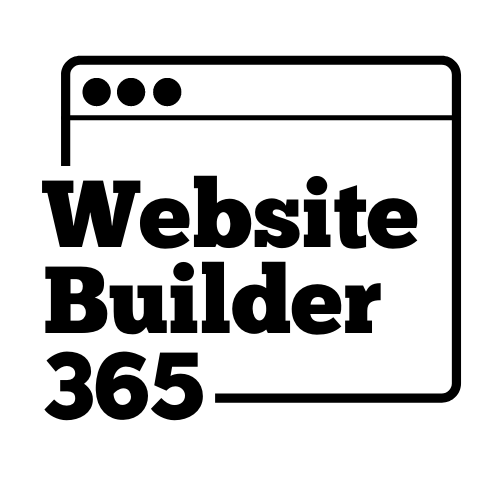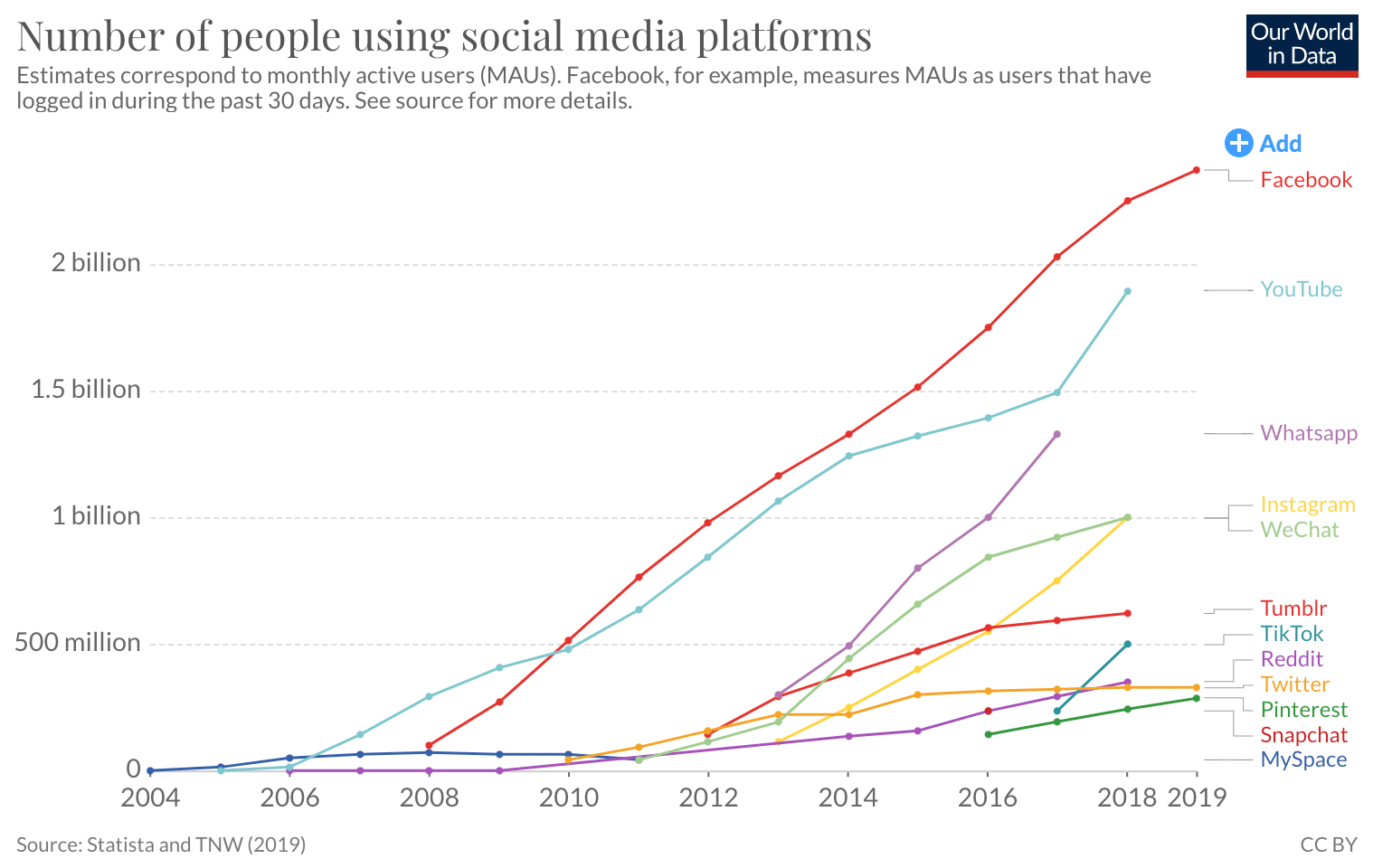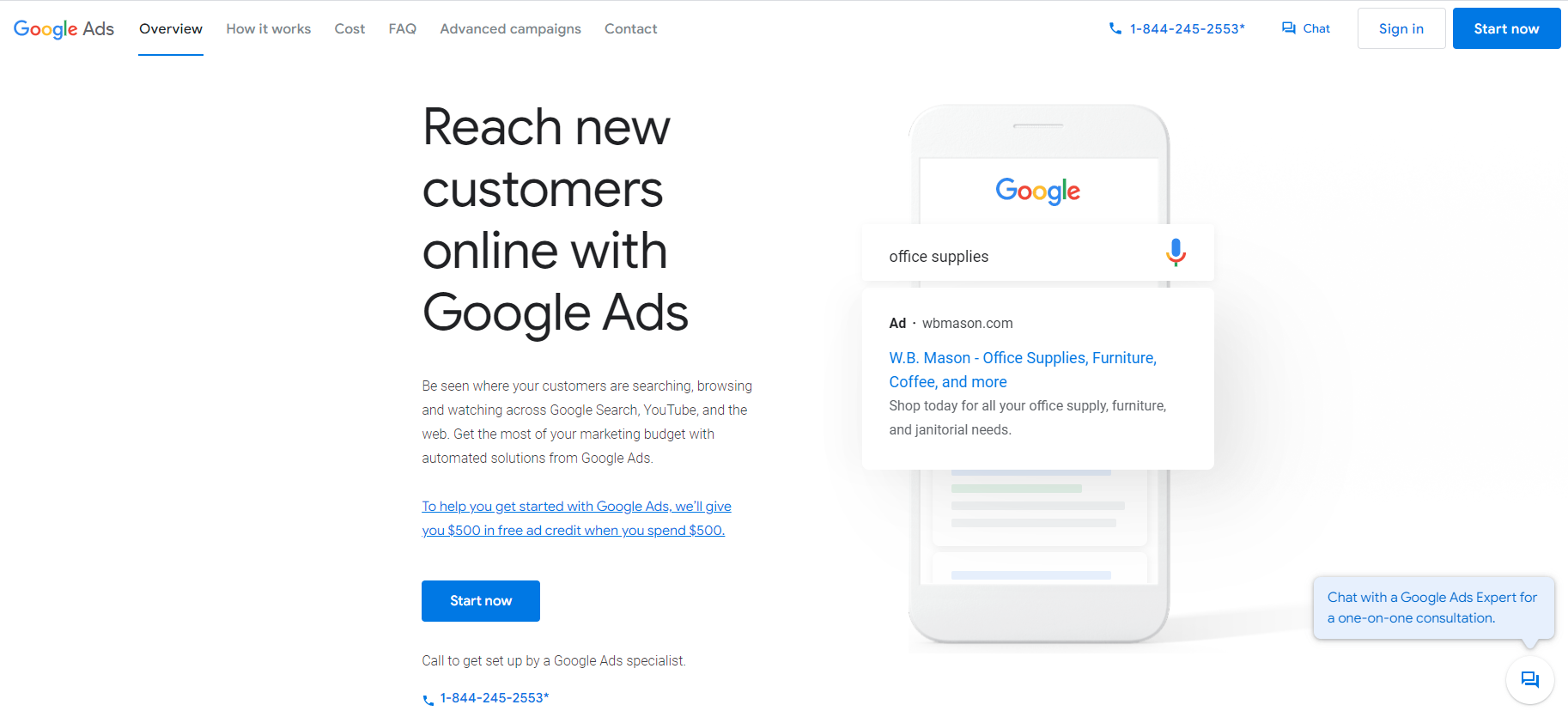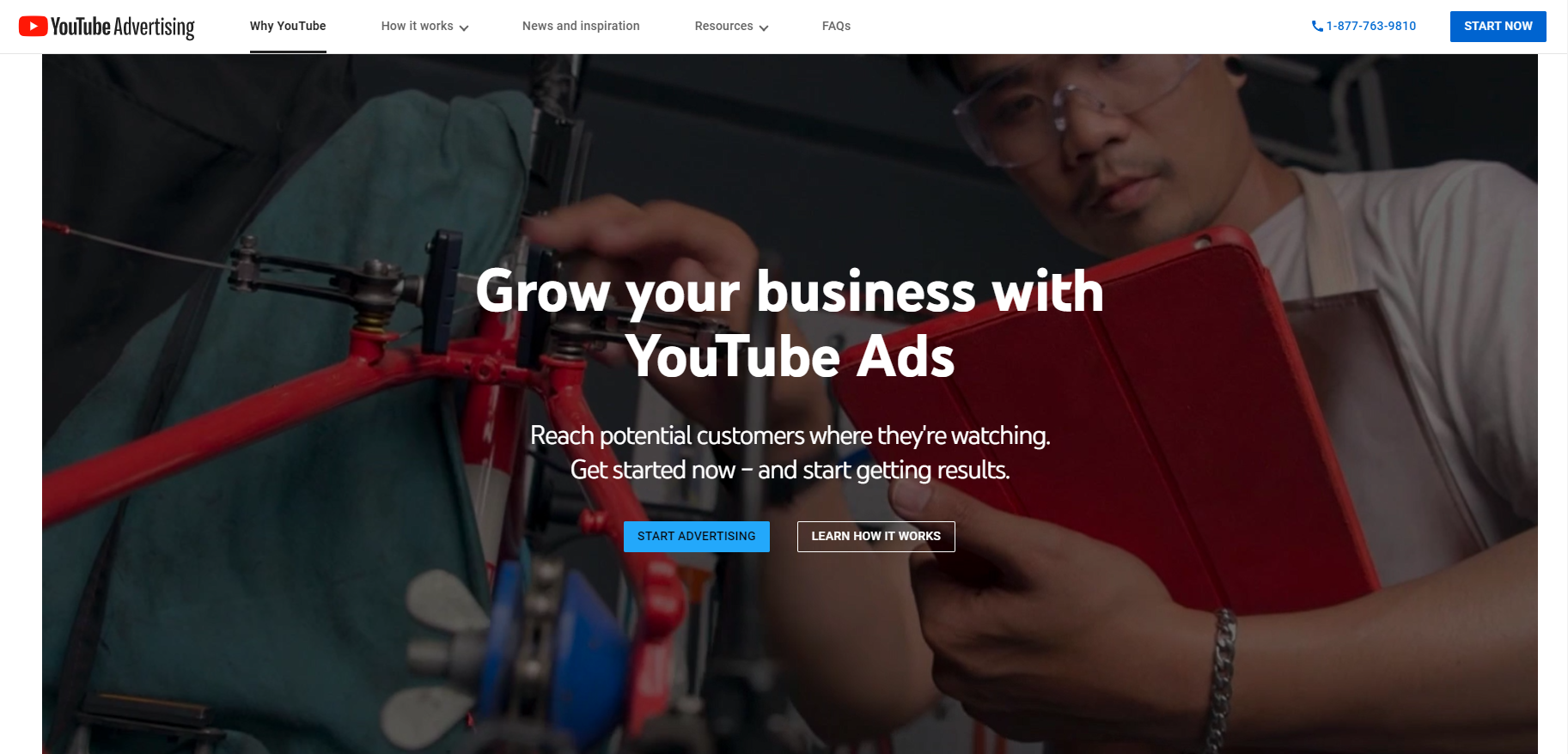Website Promotion: Where and How?
Everyone wants to get the word out there about their site or service. The question is, where do you go to do this, and how do you get started? Many people turn to placing ads on different platforms as a way to spread the word and promote what their site has to offer. In the world of online ads and promotions, it might sometimes feel like there are infinite places to get started, and it’s easy to feel overwhelmed once you really start looking at your options. That’s why I’ll be breaking down the different popular online advertising channels you could consider pursuing your site promotion efforts in. Each of them work in their own unique way and offer their own advantages, so it’s up to you to consider what methods and platforms would work best for your own needs.
Websites are essential to ensuring you establish your successful and coherent online presence. What if you don’t have a site to promote? You can easily start one in minutes! Having a site is a cornerstone for anyone who wants to maintain and boost their online presence for several reasons. First, having a site lets you keep up with your competitors who also maintain an online presence. If you don’t have a website but your competitors do, you lose, because potential clients can find your competitor much easier than they can find you. Having a site also serves as an always-accessible and convenient location for interest towards you and/or your services to be generated. Even if, for example, you have a physical storefront that isn’t open 24/7, you can still draw in interest from potential clients by having an accessible site that they can find and learn about you on.
Having a site also increases your chances of being discovered by people who otherwise wouldn’t have found you and/or what you offer. The nature of browsing sites online means people naturally look around and wander between different sites and pages they might find. With a site active that helps promote your online presence, you could earn the interest of potential clients simply by chance through their own browsing. These reasons are why overall having a site is far more advantageous than not having one.
Creating a website may sound complicated at first, but you’ll find that it’s simpler than you might think, and you can start one in minutes! Services online allow you to create and design websites easily and conveniently, through a drag-and-drop system that anyone can use regardless of prior experience. These website building services are designed so that end results tend to consistently turn out presentable and professional-looking, too. The service that I’ve used in the past was the Website.com Site Builder, which offered me a great range of customizability with my site while still remaining straightforward and easy to adapt to. If you’re looking to start a website and want something that can be effortlessly professional-looking, consider giving them a try.
General Social Media Campaigns
4.62 billion people around the world are now active social media users, which is 58.4% of all people alive today and is more than half of the world’s entire population. The average daily time spent using social media is 2 hours and 27 minutes. The power of promotion and advertising on social media should never be underestimated, because just one social media campaign can easily bring in large amounts of new interest in your site to give it the boost it needs.
Social media platforms like Google, Facebook, YouTube, Twitter, TikTok, Snapchat, and countless other platforms out there, are your best choices when looking to launch social media ad campaigns. Of course, listing out social media platforms to consider advertising on is far easier than the actual execution of advertising on them.
Remember that each platform has different demographics, along with different expectations for the forms and methods of advertisement that they feature. This is why considering any social media platform for advertisements should be prepared for with a good idea of what, where, and how you plan to advertise your site, along with what sort of target audience you aim to appeal to.
Compared to traditional forms of advertising like putting ads in magazines and newspapers, or posting flyers in public places, online advertising as a whole offers you the advantages of having analytics, statistics, and algorithms, all of which bring added value and effectiveness to what, how, and when you advertise. For example, you can receive traffic reports for 2 separately designed ads detailing how many users they redirect to a site you advertise; if you see one ad is clearly outperforming the other, or if a certain time of day brings in much more traffic than any other time of day, you’ll have insight into your advertisement campaign that can help you adapt beneficial changes to how you run your ads, or finetune any aspects of your ads that you weren’t completely sure of before.
Across advertising on different social media platforms, you can expect to encounter some common terms and vocabulary that you should understand if you want to get the most out of your advertising campaigns and efforts. We’ll take an overview of some key important terms to remember before we move on to talking about prominent platforms to consider paid advertising on.
CPC, or cost-per-click, is a way of paying for advertisements based on the number of clicks that the ad receives. CPA, also known as cost-per-acquisition or cost-per-action, refers to a way of paying for advertisements based on a specified action, such as one instance of an account being registered, or one instance of a purchase being made. Usually, advertisers only use CPA after their ads have successful conversion of customers, because with successful conversion, their advertising platform of choice will have more accurate data to determine how likely one click on an ad from a visitor will result in a completed purchase. CPL, or cost-per-lead, means you pay for advertising based on the number of visitors to your site that have real potential to become a customer of yours. These are basic terms that you’ll see for payment amounts in advertising, so it’s important to consider these different methods of payment and take them into consideration along with your budget for advertising, which you can think of in terms of days, weeks, months to make sure you know what you’re putting in to you ads.
Advertise on Google Ads
As an example, let’s say you run a physical retail business with a connected website for it. Your business centers around designing and creating custom made-to-order phone cases based on individual customers’ requests. You want awareness of your business to reach new customers who would also be interested in buying your custom phone cases. Google’s powerful algorithm that operates Google Ads would know to display your ads to people who search for and use Google’s services for relevant topics, such as people who frequently look up where they could have custom phone cases made, or people who show that they want new phone cases that aren’t the typical mass-produced kinds bought online.
A feature of Google Ads is that they offer flexible pricing options depending on what your advertising budget is. You can set a monthly budget cap that won’t be exceeded, so you can advertise while clearly knowing the maximum amount of money you’ll be spending. Different amounts of money put into your advertisement campaign unsurprisingly give your advertising campaign different results, since more money put in by you means a more aggressive promotional campaign from Google. This means it’s up to you to decide the efforts that Google will expend on bringing new traffic and interest to your site. For example, allotting $3000 to your Google Ads campaign will bring in much more noticeable and better results than if you allotted $400.
The way Google Ads works is through a system of bidding. Depending on what you’re aiming to achieve with your ads, whether it’s bringing more people into your physical store location or getting more people to click through the ad to your site, you can adopt a different method that you want the algorithm to display your ads with. The different ways the algorithm can display your ads with are designed to help fulfill your goals with your advertisement campaign.
With ads on Google Ads, you aim to maximize conversions and clicks, and whether ads are shown to users is based on their bidding process that happens behind the scenes on Google’s platform. Ads bid to be shown to Google users based on parameters like the maximum amount an ad will spend in one instance and how old or “mature” the ad is, and from here the Google Ads algorithm will carry out the advertising process for you. Different ads will “bid” to be the ad shown to a user, where the ad that bids the highest will get the spot; you can set maximum amounts that your ad should bid for in a single instance to ensure your advertising budget stays within your desired scope.
As an example, imagine you’ve previously run ad campaigns for your site that have had successful conversion of customers, and have also provided you the data from this occurring. Knowing this and having data from that campaign in hand, you can use CPA, also known as cost-per-acquisition or cost-per-action, to set an aim to spend up to $30 for a single new signup to be acquired by the ad for your service. With this aim set, the Google algorithm will calculate how your ad can be shown to different demographics and users so that, in the long run, your ad will achieve the same or similar results to what you’re aiming for.
Advertise on Facebook Ads and on Instagram
Advertising on Facebook is simple. Your ad is shown to people based on parameters like the location, demographics, and type of people you specify you want your ad to reach. Facebook offers you a wide range of customizability with your ads, such as letting you decide which specific mobile device operating system, city population size threshold, and feature of Facebook that you want your ad to show up on. Note that when setting up your advertising campaign on Facebook, your ad will also be displayed in Instagram by default, and there’s an option to disable this from going through.
The ability to adjust and specify what audience you hope your ads can reach can really come in handy. For example, imagine you’re still looking to advertise for your business that designs and creates custom phone cases for your customers that I described earlier in the article. However, because your business has only been open for a few months and you haven’t had the chance to expand your range of services as widely as you’d have liked to, you only offer custom phone cases for iOS devices right now. Considering the nature of what you’re aiming to advertise and reach a relevant audience for, you would want to specify for your ad to only reach iOS devices in areas with populations of more than 10,000. Parameters for your ad like this can make the difference between your ads reaching uninterested audiences, and your ad reaching a very relevant audience.
Advertising on Facebook has several selling points. When you advertise on Facebook, whether your ads are shown to different groups takes into account your Facebook business page, your competitors’ business pages, and more. When you first set up your ads on Facebook, you’ll be asked a series of questions that help Facebook determine information it can use to finetune your advertisement campaign. From here, your campaign can target specific demographics of Facebook users to bring in better results for your own Facebook page and/or website. For example, you can set your ads to only include users that are followers of a competitor’s Facebook page, and through this ad offer them an exclusive deal that beats your competitor’s current offerings.
When advertising with Facebook Ads, another advantage is that your ads can also be displayed on Instagram. When your ads are displayed on Instagram, you get an advantage over regular non-advertisement posts, which is that you can place links in your ads. Instagram stories, which last temporarily for 24 hours, and Instagram bios are able to feature links in them, but unless a post is a paid advertisement like yours would be, links can’t be placed in posts. This is a powerful feature for you to capitalize off of when you advertise with Facebook Ads, as you can drive traffic from another platform to your site.
Advertise on YouTube Ads
When people come to YouTube looking for things that interest them and are relevant to them, ads are able to capture this interest that they have and direct it where the ad would like it to go. Advertising on YouTube means you’re given ripe opportunities to cultivate awareness about what you have to offer.
There are several forms of advertisement that YouTube allows you to run your campaign with. Different forms of advertisement can give your potential clients different opinions and views on what you’re advertising to them. This makes it important to consider both the advantages and disadvantages of the same advertisement form before you choose to use it, so that you can better understand how effective and appealing your ads will be towards YouTube users.
The majority of ads YouTube users will see are video ads that play before, during, or after videos that they watch. These include skippable video ads, which make users watch a few seconds of the ad before they have the option to skip the ad, non-skippable video ads, which require users to watch the entirety of the ad regardless of its length, and bumper ads, which are 6 seconds long and designed to boost advertisers’ brand awareness among YouTube users. Bumper ads in particular are noted for their effectiveness, where 9 out of 10 bumper ad campaigns averaged brand awareness increases of 38%; brand awareness is directly correlated with the willingness of consumers to engage with and purchase products/services, demonstrating the success of this type of YouTube advertising.
Video ads overall are a more intrusive form of advertisement that YouTube users will see, but in return, they offer varying levels of viewer engagement, video abandonment rate, and effectiveness based on the timing, length, and whether or not users can skip them. Smart usage of video ads can get you far when you understand how to better appeal to YouTube users to bring your site success.
Your YouTube advertisements could also be still images that appear around the YouTube video player but don’t intrude on the viewing experience as much as video ads do. Your ads could be short and wide still images, called overlay ads, that display within the video player while the videos that YouTube users are watching continue to play without any other interruption. They could also be display advertisements, which are rectangular still images that appear above the recommended videos column for a video being watched, either to the right of or below the video player. These are very non-intrusive forms of advertisement that YouTube offers advertisers, where the stationary nature of these types of ads can be used to draw in YouTube users’ attention in different ways such as presenting straightforward deals and selling points to those who take the time to read the ads. While these ads might fall a bit short of video ads’ ability to grab YouTube users’ attention, be it voluntary of the user or not, these ads might also be more broadly appealing to all YouTube users, even those who are normally irritated by interruptions in their entertainment and would appreciate non-intrusive advertising on the content they’re enjoying.
Closing Thoughts
Now that you’re aware of different places you can take the promotion of your online presence, don’t hesitate to start looking into how to get your ads out there in the world! Depending on what you aim to do, you can consider looking at one platform, or multiple platforms, to start your advertising journey! Be flexible, adaptive, and passionate about the ads you’re putting out to maximize their success!
We’ve talked a lot about paid methods of advertising and their different forms across different platforms, but these aren’t the only options available to anyone looking to promote their site. While paid methods of promotion and advertising may be recognized for their efficiency and flexibility, there’s also free methods of site promotion that can attract organic traffic to your site, so don’t be afraid to consider different options based on what your needs and capabilities are.




